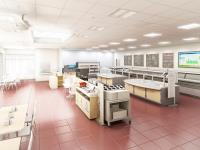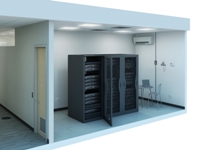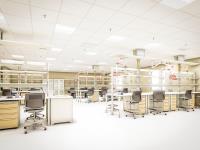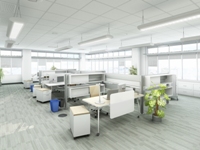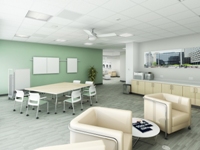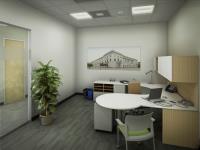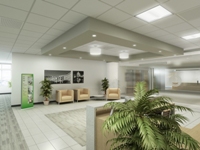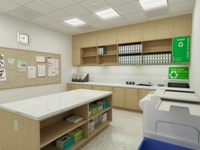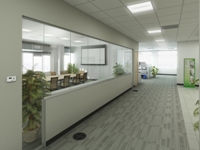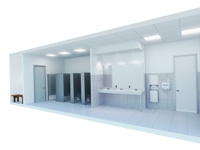Products
Break/Pantry
Break rooms provide space for occupants to network and obtain nourishment. Provide Energy Star labeled dishwashers and refrigerators to save on utility costs. Provide re-usable beverage containers and utensils and access to recycle and compost containers to reduce waste expenses.
40 Products | Explore workspaceCafeteria
A cafeteria blends several uses--including food preparation, food service, and multi-use seating areas--into a diverse set of rooms with substantial visitor education opportunities. Food service equipment uses a lot of energy since some items to be powered on all the time to maintain food quality.
53 Products | Explore workspaceComputer/LAN room
Computer/LAN rooms are used to house servers and other computer equipment. Because this equipment gives off heat, additional cooling and ventilation may be required. Use Energy Star servers to save on utility costs.
28 Products | Explore workspaceEnclosed Conference
Enclosed conference rooms should be designed to facilitate communication. Utilize teleconference or video conference technologies to reduce travel expenses. Incorporate occupant sensor & individual temperature & lighting controls to save on energy costs and keep the space comfortable for groups of different sizes.
34 Products | Explore workspaceLaboratory
A typical laboratory uses five times more energy and water per square foot compared to office buildings and other facilities, which means five times the utility costs. This is due to the energy-intensive nature of laboratory activities – that require containment and exhaust devices, large pieces of heat-generating equipment, and fail-safe back-up systems – as well as intensive ventilation and other requirements to address health and safety.
32 Products | Explore workspaceOpen Office Area
An open office area supports work productivity for groups of employees. Design this space to be flexible, allowing for quick transition from collaborative to individual setup. Optimize daylight and views, and avoid blocking views by using low cubicle dividers or dividers made of transparent material.
29 Products | Explore workspaceOpen Teaming Space
Teaming spaces are flexible areas designed to foster collaboration and innovation. They should include easily re-configurable work surfaces, where groups can spread out and vertical surfaces for making work visible. Seating should be agile and passively ergonomic; occupants should be able to move around the space easily and comfortably.
29 Products | Explore workspacePrivate Office
Private offices support individual or small team working environments. Enhance occupant productivity with active ergonomics. Design flexible systems to accommodate changes in employee, equipment, and storage needs over time.
34 Products | Explore workspaceReception/Lobby
Office reception areas welcome visitors and provide opportunity for wayfinding, corporate branding and education. Include signage to educate visitors regarding high-performance attributes of the office. Utilize entry mats to help stop dirt and debris from entering the building.
36 Products | Explore workspaceSupport Area
Support areas provide space for documentation assembly and storage. Provide multi-use equipment for fax, copy, and scanning abilities. Use signage to educate building occupants regarding resource cost savings. Provide accessible collection bins to recycle toner cartridges, batteries, cardboard, paper, etc.
33 Products | Explore workspaceTenant Corridor
Tenant corridors are transitional areas leading from one space to another. Try to limit the amount of corridors by using space efficiently and using open offices in order to maximize functional space and limit the need to condition non-active space. Use careful HVAC zoning and lighting controls to realize energy cost savings.
18 Products | Explore workspaceTenant Restroom
Restrooms provide many opportunities to save on water bills. Use low flow aerators on lavatories (.5 gpm), low flow showerheads (2.5 gpm), and dual flush toilets (0.8/1.6 gpf) or low flow toilets (1.2 gpf). Waterless urinals save significant amounts of water, but require slightly different maintenance regimes, so custodial staff must be trained to maintain them properly.
32 Products | Explore workspace

